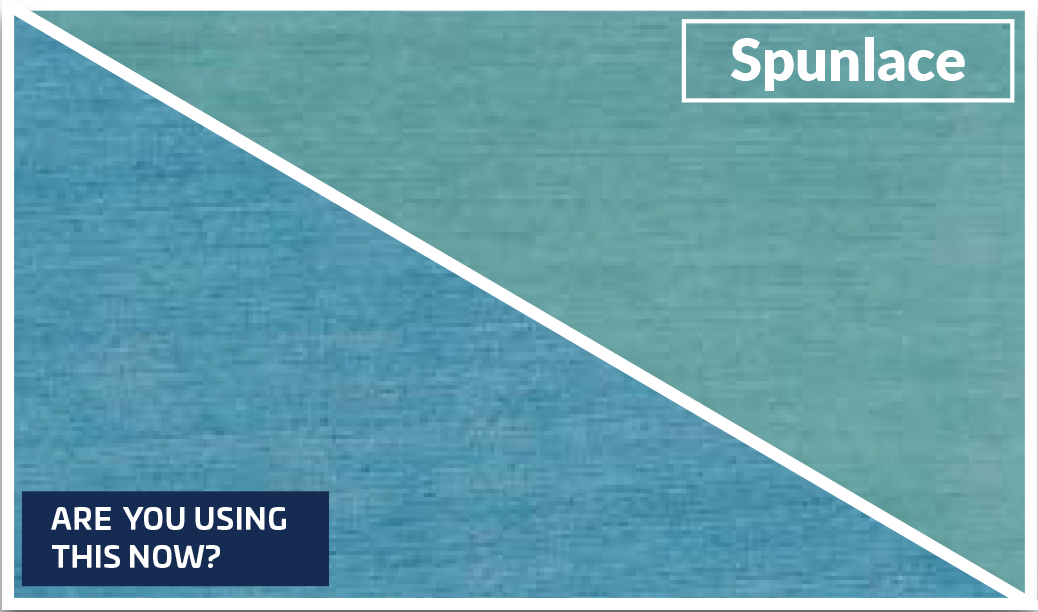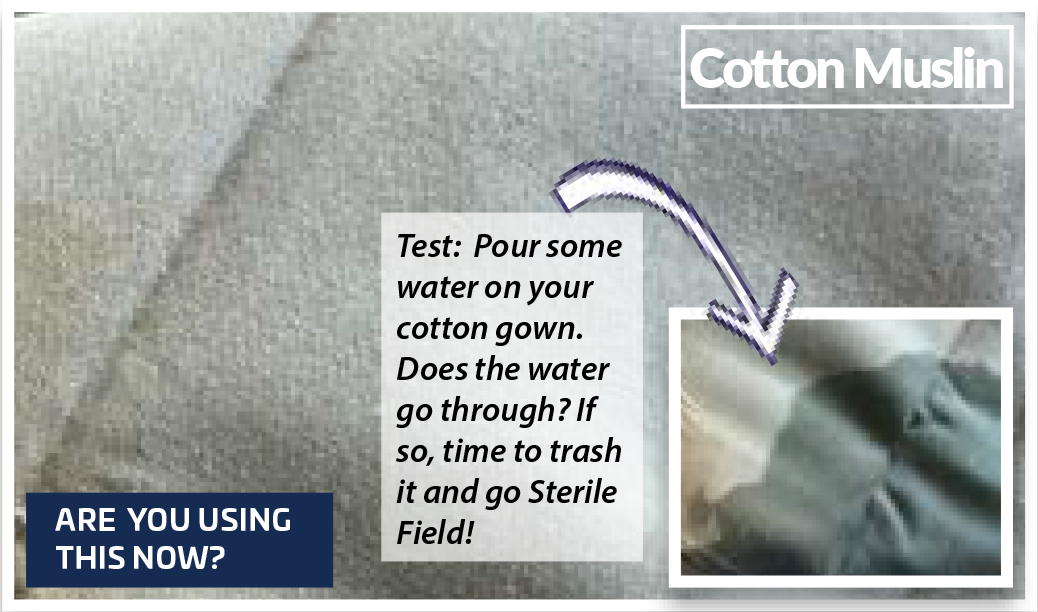BASE MATERIAL OF GOWN
KEY TO BARRIER PERFORMANCE
The type of the base material and how it is constructed is the most important factor in barrier performance.
Think about this analogy: if wearing a tee shirt in the rain – does a heavier material repel the water any better than a lighter material? Of course not. A different material – such as the material in a raincoat – does the trick! So material choice in gowns is the #1 factor in your gown barrier.
The majority of veterinary gowns are made of one of these base materials: Cotton/Muslin, Spunlaced Polyester or Spunbond-Meltblown- Spunbond (called SMS). By far – on all measures – SMS is the best material for gowns.
Spunbond-Meltblown- Spunbond (SMS)
- Strengths
o Breathable - Allows steam to pass through (as sterilization wrap)
- Allows heat to escape (for gown wearers)
o Unbelievable barrier for its basis weight - Spunbond layers – softer for comfort
- Excellent barrier, even in light basis weights
- Lowest Cost (by far) due to high demand/use in human surgery
- Weaknesses
o Not as soft as cotton

Spunlaced Polyester
- Strengths
o Comfortable
o Recognizable in veterinary surgery - Weaknesses
o Must be reinforced in critical zones to prevent strikethrough
o Even when treated/coated, provides poor barrier when pressure applied (i.e., leaning into the gown)
o Often Sewn/Poor Construction
Muslin/Cotton
- Strengths
o Comfortable/breathable
o Apparently low cost per use - Weaknesses
o Negligible barrier after but a few washings
o With no barrier, useless for infection control
Don't Be Afraid To Reach Out Your Paw
Interested in learning how better materials can improve your operations?




